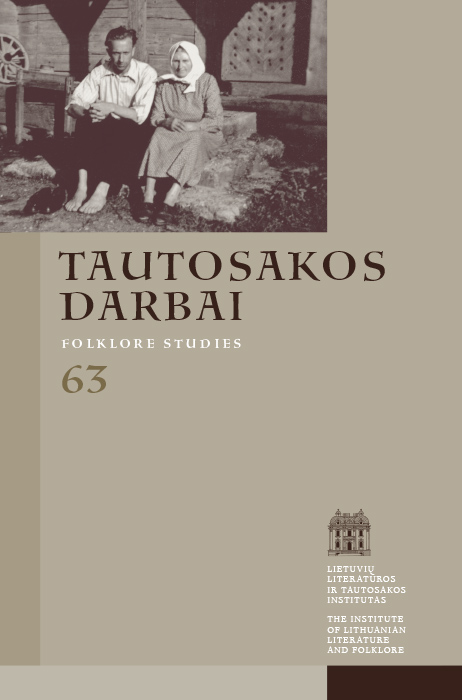Totorių Vokė. Istorinės atminties ir asmeninių patirčių erdvė
Santrauka
Remiantis antropologinio stebėjimo ir užrašytų gyvenimo pasakojimų duomenimis, tiriama Vokės upės kultūrinė erdvė, kur nuo XIV a. pabaigos gyvena totoriai. Šis faktas yra tapęs Lietuvos didžiojo istorinio pasakojimo dalimi, liudijančia totorių gyvenimo Lietuvos Didžiojoje Kunigaikštystėje pradžią. Straipsnyje jis permąstomas Vilniaus kraštui būdingo daugiakultūriškumo kontekste. Vokės totorių lokalinis tapatumas pristatomas kaip išplečiantis apibendrintą Lietuvos totorių tapatybės modelį. Nagrinėjamos geografinės Vokės kraštovaizdžio ypatybės (vietovardžiai, gatvės, kalvos, kapinės), tapatybės raiškos (kalba, istorinė atmintis, darbas), subjektyvios asmeninės patirtys, liudijančios totorių įsišaknijimą šiose vietose, santykį su žeme ir vienas kitu.
Atsisiuntimai
Skaitomiausi šio autoriaus(ų) straipsniai
- Rūta Žarskienė, Inga Vidugirytė, Asta Skujytė-Razmienė, Gražina Kadžytė, Lina Leparskienė, Vita Džekčioriūtė-Medeišienė, Dalia Zaikauskienė, Kronika , Tautosakos darbai: T 58 (2019)
- Guntis Pakalnas, Rimantas Sliužinskas, Asta Skujytė-Razmienė, Radvilė Racėnaitė, Vita Ivanauskaitė-Šeibutienė, Rūta Žarskienė, Lina Leparskienė, Andželika Jakubynienė, Kronika , Tautosakos darbai: T 47 (2014)
- Lina Leparskienė, „Stebiu pasaulį, ieškau mažyčių detalių“: tyrėjos žvilgsniu apie folkloristiką, mitologiją, prigimtinę kultūrą. Pokalbis su 2023 m. Nacionalinės Jono Basanavičiaus premijos laureate Daiva Vaitkevičiene , Tautosakos darbai: T 67 (2024): Tautosakos darbai
- Lina Leparskienė, Karaimiška Trakų erdvė vietos gyventojų pasakojimuose ir padavime apie stebuklingą kunigaikščio Vytauto žirgą , Tautosakos darbai: T 56 (2018)
